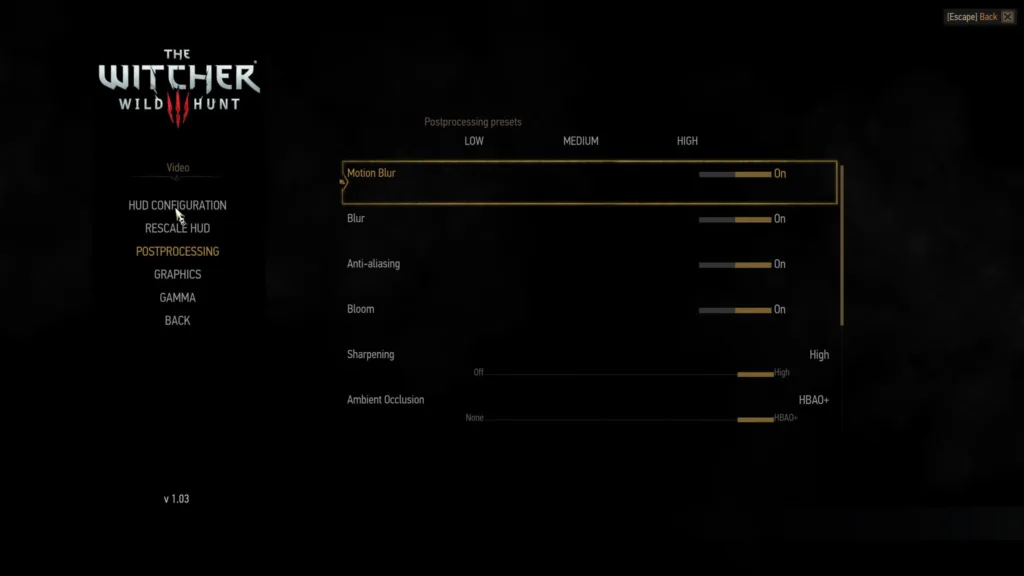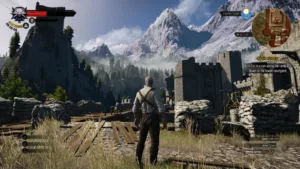As part of a regular feature for BabelTechReviews, this evaluation is comparing the performance of 32 game benchmarks with the GeForce WHQL 350.12 driver that was released the day before GTA V, versus the very latest Geforce WHQL 352.86 driver that was released the day before the Witcher 3 released on Tuesday, just 4 days ago. We are also going to briefly look at the Witcher 3, BTR’s latest benchmark.
 This driver performance analysis features Nvidia’s top two Maxwell cards although we plan to regularly test Kepler also in upcoming evaluations. We want to at least document the performance changes of this driver set even though we are only testing two video cards. We are going to give you the performance results of the GTX 980 and the TITAN X at 1920×1080, 2560×1440, and at 3840×21600. This driver mini performance evaluation will give a natural comparison between the performance changes since Nvidia’s last WHQL driver set.
This driver performance analysis features Nvidia’s top two Maxwell cards although we plan to regularly test Kepler also in upcoming evaluations. We want to at least document the performance changes of this driver set even though we are only testing two video cards. We are going to give you the performance results of the GTX 980 and the TITAN X at 1920×1080, 2560×1440, and at 3840×21600. This driver mini performance evaluation will give a natural comparison between the performance changes since Nvidia’s last WHQL driver set.
We are going to test GeForce WHQL 352.86 using our current benchmark suite of 32 games plus 2 synthetic benchmarks. Our testing platform is Windows 8.1 64-bit, using an Intel Core i7-4790K at 4.00GHz which turbso to 4.4GHz for all cores, an ASUS Z97E motherboard, and 16GB of Kingston “Beast” HyperX RAM at 2133MHz. The settings and hardware are identical except for the drivers being tested.
At GTX 760 and above, we test at higher settings and resolutions generally than we test midrange and lower-end cards. Although all of our games are now tested at three resolutions: 3840×2160, 2560×1440 and 1920×1080 at 60Hz, and we use DX11/10/10.1 whenever possible with a very strong emphasis on the latest DX11 games. We no longer benchmark 2560×1600, but now use the more popular 2560×1440 resolution beginning with this analysis.
Several games have had updates which changed the settings. Shadows of Mordor has patched in FXAA and Camera + Object Blur which is more demanding than previously and we are now testing with the highest settings available.
Let’s get right to the test configuration, the driver release notes, and then to the results.
Test Configuration & Driver Release Notes
Test Configuration – Hardware
- Intel Core i7-4790K (reference 4.0GHz, HyperThreading and Turbo boost is on to 4.4GHz; DX11 CPU graphics), supplied by Intel.
- ASUS Z97-E motherboard (Intel Z97 chipset, latest BIOS, PCOe 3.0 specification, CrossFire/SLI 8x+8x)
- Kingston 16 GB HyperX Beast DDR3 RAM (2×8 GB, dual-channel at 2133MHz, supplied by Kingston)
- GeForce GTX 980, 4GB reference clocks, supplied by Nvidia
- GALAX GTX TITAN X, 12GB, reference clocks, supplied by Nvidia
- Two 2TB Toshiba 7200 rpm HDDs
- EVGA 1000G 1000W power supply unit
- Cooler Master 2.0 Seidon, supplied by Cooler Master
- Onboard Realtek Audio
- Genius SP-D150 speakers, supplied by Genius
- Thermaltake Overseer RX-I full tower case, supplied by Thermaltake
- ASUS 12X Blu-ray writer
- Monoprice Crystal Pro 4K
Test Configuration – Software
- Nvidia GeForce 350.12 WHQL drivers and GeForce 352.86 WHQL drivers for the GTX 980 and for the GTX TITAN X. High Quality, prefer maximum performance, single display.
- VSync is off in the control panel.
- AA enabled as noted in games; all in-game settings are specified with 16xAF always applied; 16xAF forced in control panel for Crysis.
- All results show average, minimum and maximum frame rates except as noted.
- Highest quality sound (stereo) used in all games.
- Windows 8.1 64, all DX10 titles were run under DX10 render paths; DX11 titles under DX11 render paths. Latest DirectX
- All games are patched to their latest versions
The 32 Game benchmarks & 2 synthetic tests
- Synthetic
- Firestrike – Basic & Extreme
- Heaven 4.0
-
DX9
- The Witcher 2
-
DX10
- Crysis
-
DX11
- STALKER, Call of Pripyat
- Max Payne 3
- the Secret World
- Sleeping Dogs
- Hitman: Absolution
- Tomb Raider: 2013
- Crysis 3
- BioShock: Infinite
- Metro: Last Light Redux (2014)
- Battlefield 4
- ArmA 3
- Batman: Arkham Origins
- Thief
- Sniper Elite 3
- Watch_Dogs
- GRID: Autosport
- Middle Earth: Shadows of Mordor
- Alien Isolation
- Assassin’s Creed Unity
- Civilization Beyond Earth
- Far Cry 4
- Dragon’s Age: Inquisition
- Metal Gear Solid V: Ground Zeroes
- The Crew
- Evolve
- Total War: Attila
- Wolfenstein: The Old Blood
- Grand Theft Auto V
- the Witcher 3
Since the Witcher 3 is a new benchmark for BTR, the settings we use are completely maxed-out Ultra (including shadows and HairWorks), with every setting on and at the highest settings. It is a very demanding and beautiful open world game, truly “next generation” much like GTA V is. 

Lets look at Nvidia’s release highlights regarding the GeForce 352.86 WHQL driver before we head to performance testing.
Release Notes Highlights for GeForce 352.86
This is a really short list highlighting the fact that Nvidia’s WHQL driver release schedule is tied to the release of new games. This driver is especially for the Witcher 3. In fact, the extremely brief release notes are a cut and past of the last release notes where they forgot to take out the mention of a driver alignment with the GTX Titan X. For the comprehensive release notes, you will need to download the .pdf
Just in time for the highly anticipated title The Witcher 3: Wild Hunt, this new GeForce Game Ready driver ensures you’ll have the best possible gaming experience. With support for GeForce SLI technology and one-click game setting optimizations within GeForce Experience, you’ll have the best possible performance and image quality during gameplay. In addition, this driver is aligned with today’s launch of the world’s fastest gaming GPU; the GeForce GTX Titan X.
Game Ready
Best gaming experience for The Witcher 3: Wild Hunt, including support for SLI Technology and GeForce Experience 1-click optimizationsSupported Products
GeForce 900 Series:
GeForce GTX 980, GeForce GTX 970, GeForce GTX 960
GeForce 700 Series:
GeForce GTX TITAN Z, GeForce GTX TITAN Black, GeForce GTX TITAN, GeForce GTX 780 Ti, GeForce GTX 780, GeForce GTX 770, GeForce GTX 760, GeForce GTX 760 Ti (OEM), GeForce GTX 750 Ti, GeForce GTX 750, GeForce GTX 745, GeForce GT 740, GeForce GT 730, GeForce GT 720, GeForce GT 710, GeForce GT 705
GeForce 600 Series:
GeForce GTX 690, GeForce GTX 680, GeForce GTX 670, GeForce GTX 660 Ti, GeForce GTX 660, GeForce GTX 650 Ti BOOST, GeForce GTX 650 Ti, GeForce GTX 650, GeForce GTX 645, GeForce GT 645, GeForce GT 640, GeForce GT 630, GeForce GT 620, GeForce GT 610, GeForce 605
GeForce 500 Series:
GeForce GTX 590, GeForce GTX 580, GeForce GTX 570, GeForce GTX 560 Ti, GeForce GTX 560 SE, GeForce GTX 560, GeForce GTX 555, GeForce GTX 550 Ti, GeForce GT 545, GeForce GT 530, GeForce GT 520, GeForce 510
GeForce 400 Series:
GeForce GTX 480, GeForce GTX 470, GeForce GTX 465, GeForce GTX 460 SE v2, GeForce GTX 460 SE, GeForce GTX 460, GeForce GTS 450, GeForce GT 440, GeForce GT 430, GeForce GT 420
Let’s head to the charts and compare the driver progress with the GTX 980 and with the GTX TITAN X since we tested them last time.
Benchmarks & Performance Analysis
Here are our results of thirty-two games and 2 synthetics compared between GeForce 350.12 WHQL drivers, and GeForce 352.86 WHQL drivers using both GTXes. Each set of WHQL drivers is compared against the other in adjoining results column and the higher performance number is in bold. If there is a tie, both results are given in bold type.
Please note that we are no longer testing at 2560×1600 and those results are given for the last time for the older driver 350.12. The results at 2560×1600 are noted with an asterisk (*), and the results with driver 352.86 at 2560×1440 are noted by a double asterisk (**), and they should not be compared directly to each other.
We note mostly minor improvements with Nvidia’s new GeForce 350.12 over the older drivers and there are only a few standouts in only a few games. Evolve seems to be one of the games that saw good improvement with the latest WHQL, and of course, it is the driver set for the Witcher.
Conclusion:
 So far, we would recommend upgrading to the latest GeForce 352.86 driver because there are generally incremental advantages, and no large performance-impacting negatives that we encountered. It is also the driver to use for the latest really fun games that we are playing including the Witcher 3. It appears that Nvidia intends to release a WHQL driver with each new major PC release and we are looking forward to evaluating the next one.
So far, we would recommend upgrading to the latest GeForce 352.86 driver because there are generally incremental advantages, and no large performance-impacting negatives that we encountered. It is also the driver to use for the latest really fun games that we are playing including the Witcher 3. It appears that Nvidia intends to release a WHQL driver with each new major PC release and we are looking forward to evaluating the next one.
Stay tuned, next up we are benching for a new card that will be more important and more in-depth than usual.
Happy gaming!
